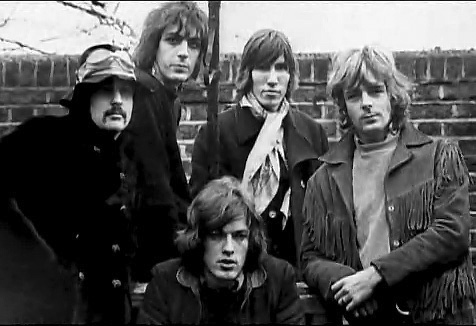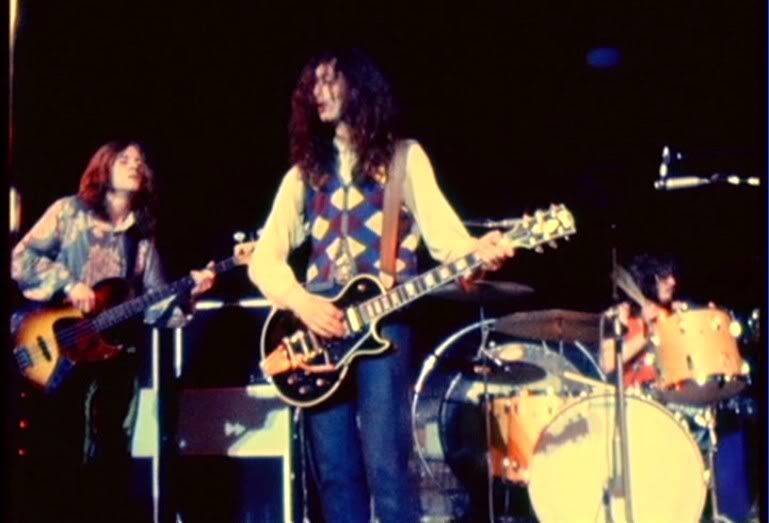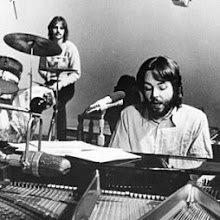"Live Peace In Toronto" is a concert album capturing John Lennon's first proper concert without the Beatles (only a few more would follow in his lifetime.) The band features John on rhythm guitar and vocals, Yoko on vocals, then unknown drummer Alan White (later to join Yes), who was lucky enough to be hanging around at Apple Studios when John needed a drummer, Klaus Voormann, "Revolver" designer and soon to be popular session bassist with Apple artists, and Eric Clapton, who only recieved John's offers to join the show a day before they were set to fly to Toronto, on lead guitar.
Like many obscure John Lennon albums, it was while reading Wikipedia that I first stumbled upon "Live Peace." The tracklisting, consisting of cover tunes done with The Beatles, originals, and some Yoko numbers, both felt comforting (for the Lennon stuff) and intimidating (I had heard little of Yoko, so was skeptical about a 12 minute song by her!) Sitting in my school's library, I should have been doing work, but I read on about the album. I had never seen it in stores, and feared finding it would be hard. But a week or two later, on my 15th birthday, I headed down to Virgin Records at Union Square, where I would meet my uncle, who promised to treat me to a CD or 2. Just for kicks, I checked the Lennon section, and there to my astonishment was the album!
It was a brand new 2006 edition, just hitting shelves (as I later learned). The coolest part about this was that inside, a calendar is included. In '69, it was a '69 calendar. In '95, when the original CD edition came out, it was a '95 calendar. And now I had one with an '06 calendar, a gret way to remember the year I got it. Also great about this edition was that it was an audiophile version, a great quality remaster, printed on a gold disc. It was such an impressive presentation.
Afterwards, the rest of my family came, along with my best friend, and we had sushi, spent some time in Manhattan after that, before heading home. As soon as I got in, I pulled out my Walkman (it would be another year before I'd get an iPod) and I put in the CD. I instantly fell in love.
The disc opens with "Blue Suede Shoes." On the original vinyl, the first minute of this cut was a separate track, "Band Introduction." For this first minute or so, John and the band are just tuning, shouting off mike a bit, and cranking up the amps. This was not the first live album I had (I had gotten "The Concert For Bangla Desh," and McCartney's "Unplugged" a few months earlier.) But I had never heard guitars sound so raw and (thanks to the remastering) crisp.
After an few words from John (warning the crowd that they've "never played together before") they jump into "Blue Suede Shoes." John was very nervous to perform, and as they roll through the first number, he trips a bit on the words. But the playing is fast and rocking, with Clapton ripping a solo or two.
They continue doing oldies with a number the Beatles had done, "Money." This one they do in a heavy fashion. The last cover tune they do is "Dizzy Miss Lizzy." John sound a bit more confident a sure on this one. Yoko joins in too, wailing a bit during the bridge. Lennon's boost in confidence comes in part from the fact that Yoko emerges from her white sack (part of a performance art piece), and can help John with the lyrics (a little late, however.)
"Yer Blues" is the first original number, and also possibly the least interesting. Things seem off right away when the band has trouble starting the song. John, with Clapton, had done this song in '68 for The Rolling Stones "Rock & Roll Circus," and had given a top notch version, with no small thanks to the drumming of Mitch Mitchell. Here in Toronto, however, they have trouble pulling it off, and the solo comes off lame, and the ending is not to satisfying either, as they just sort of give up.
Coming off a poor performance, John introduces to the world "Cold Turkey," before even doing the studio version (which would also feature Clapton and Voormann, while White would be replaced by Ringo). They take it at a slower pace, and though John skips around the lyrics a bit, they still pull off a convincing take (I've always thought the single version was a bit trite, and too produced to really convince me that John's screams were not just part of a track, but real pain being expressed.) John sings one last number, "Give Peace A Chance," which he knows before hand that he'll flub during the verses. But the lyrics don't matter, so much as the interesting sound the song takes on when played by a band on electric instruments. Everyone on stage sings along, and it ends on an optimistic note.
Sitting in my room, I feared that with John's portion of the album over, I would now have to suffer Yoko's half. John's introduction of her, saying "now Yoko's gonna do her thing, all over you" I braced myself. Then they started "Don't Worry Kyoko." John's played the bare riff, the other members all silent, and my fears immediately washed away. The rest of the group joined in, with Eric giving some cool phrases on guitar. Yoko started her singing, and I was forever to be a fan of her work. She exuded so much power and control and unrestrained ferocity in her singing, as she sang a song aimed at her daughter Kyoko, whom she would not see for thirty years since being with her earlier in '69.
I was sorry the song had to end, but still had the last track "John John (Let's Hope For Peace." I had already read warnings of the song, described to me as wailing feedback behind a wailing Yoko. I would later hear an a cappella version of this song, which Yoko did on the "Wedding Album," but that could not hold a candle to this later developed version. Yoko, showing off her vocal skills undoubtedly gained from her early years learning opera in Japan (as was the norm for the girls of aristocracy), first just makes vocal sounds, before wailing the title of the song many times, stretching the words, screaming them with emotion. John and Eric use their guitars to achieve feedback. Voormann does the same. White occasionally plays a fill, just to acentuate Yoko. The song ends when Yoko finishes her singing, and, along with the rest of the band, walks off the stage. The guitars are all left on, leaning on the amps, still emitting feedback after the stage has cleared. The applause roars, either cheering for the song, or just happy that Yoko is gone. Mal Evans comes on stage to shut the amps off, and we hear an announcer once more credit The Plastic Ono Band, as they finish a great performance.
The album was a big change after Lennon and Ono's 3 experimental fares, and is much more accessible. It is heavy and rocking, but, despite lyrics about about being "lonely" and wanting "to die," Lennon's half manages to keep upbeat, while Yoko's half is a whirlwind of emotion, exhausting but rewarding to listen to. It is one of my favorite albums, almost 3 years since I first heard it on a great birthday, and I recomend it highly.
Also of interest is the film "Sweet Toronto," by D.A. Pennebaker, which captures the entire show, along with other performances of the night by Little Richard and Bo Diddley. You can look it up on Youtube, and it is a great way to test whether or not the album would be your cup of tea.
Wednesday, March 18, 2009
Subscribe to:
Comments (Atom)

















